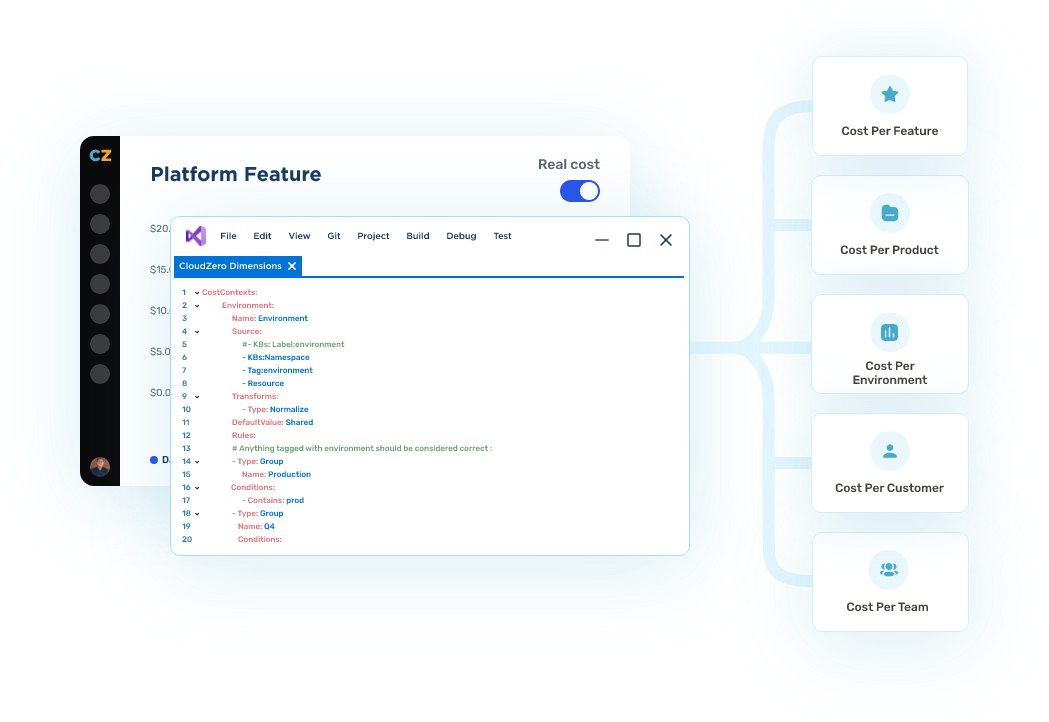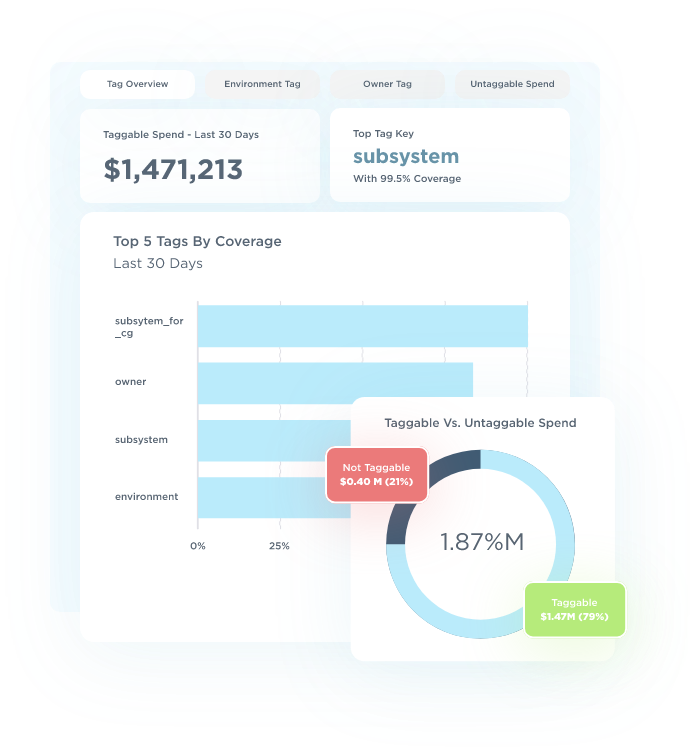Ask anyone who’s managing any cloud environment of any size, and they will undoubtedly bring up the stress they experience on a regular basis over tags.
Since the dawn of cloud, every cloud user has struggled with the challenge of tagging — essentially the only mechanism that exists for you to apply metadata to your cloud environment. The fact that tags themselves are an imperfect tool — both inflexible and hard to manage — makes no difference. It’s the idea behind them that drives their use:
Without the business context tags provide, we have no way to understand our costs in relation to the value the company is delivering to the world.
At CloudZero, we don’t pretend to have solved the tagging problem. But we can be part of the solution for companies that want to improve their cloud tagging strategy. Keep reading to find out why cloud tagging is such a crucial part of running a business, and learn what you can do to practice it more effectively. And so the struggle continues.
Why Is Cloud Tagging Important?
First things first: Tagging is a way of organizing your cloud resources by categorizing them according to certain key values.
For example, I might tag an EC2 instance running in the cloud according to who owns it, what purpose it’s serving, and what product it’s associated with — or anything else that’s relevant to my business. Cloud tagging is the only way to get that metadata into the system.
It’s also the only tool cloud providers have to help you associate business context with the systems and services you’re running within your cloud environment. Why is that so important?
Without this meaning to assign to the inventory, systems, and assets you’re running, you have no way to understand your costs in relation to the value you deliver. Having some business context around your cloud usage helps you understand:
- What is your cost per product? Per feature? Per customer?
- Which teams are building efficiently, and which are not?
- Which segments of your business are profitable, and which are not?
- Which products and features are operating successfully or not?
Without this context, you only know you have a pile of systems — but not what they’re doing or why they exist.
The organization tags provide is critical for making effective business decisions when it comes to thinking about the cost of goods sold (COGS) and pricing strategy, as well as where to invest engineering time when improving or developing new functionality. You need to be able to organize your cloud environment effectively in order to spend effectively.
What Makes Cloud Tagging So Challenging?
First, there aren’t a lot of controls around how people choose to tag. A lot of companies try to roll out policies around the tags they require, but these are difficult to enforce, particularly if you don’t start these tagging processes from the beginning.
Over time you end up with typos, mistakes, misunderstandings about how something should be tagged, and old data mixed with new data.
Second, tagging is tightly coupled with the software development lifecycle but disconnected from the business lifecycle — it takes time to write code and develop systems and environments.
If the business decides they want to categorize spend, it’s easy enough to change a few words in a database or an Excel spreadsheet.
But when it comes to changing this metadata in the cloud environment, you have to involve a cloud architect, an engineer, and a software developer in that activity. When engineers have finally implemented and deployed the tags, it’s time to do it all over again the next time your environment changes and grows.
5 Cloud Tagging Best Practices
Cloud tagging is frustrating, but it’s still the only mechanism cloud providers offer for organizing assets.
For companies looking to develop a cloud tagging strategy or simply improve their tagging practices, start by doing these five things at a minimum. (Using AWS? Read more about tagging AWS resources here)
1. Implement a tagging policy
At the very least, start by creating a tagging policy for your organization. Document what you want to achieve, and try to keep it as simple as possible. (Every tag you create is a tag you will have to maintain!) Some questions every tagging policy should answer:
- Owner – Who owns the asset?
- Description – What is the purpose or reason the system exists?
- Product/feature – What feature or product is this component associated with?
Those three categories alone can address the majority of your challenges. You may also want to consider additional tags relating to the asset’s environment (production, testing, staging, or some experiment), and the sensitivity of the data that system is processing (customer data, for example, vs. non-sensitive data).
Even if you don’t need them now, having these kinds of tags may become important later if your organization attempts to pursue something like SOC 2 certification or needs to comply with other security or privacy requirements.
2. Distribute the tagging policies widely
Formalize your tagging policies by writing them down and sharing them with the relevant people. The teams building in the cloud must accept these policies in order for the strategy to succeed.
3. Build automation into the tagging process
People should not be going into the cloud consoles of the world and trying to manually enter this information. A more modern approach is to make it part of their development process by incorporating it into the infrastructure’s code.
While this means that changes can only occur when new systems are built or changes are made (that slower engineering lifecycle), what you get in return is consistency. You can use the capabilities of CloudZero’s CostFormation or Terraform to consistently deploy a set of tags across all your systems.

4. Periodically review and remove tags
Remember — every tag you create is a tag you will maintain.
Tags tend to grow over time, so you should have a process for how you deprecate or remove tags. Meet regularly to review, revise, and reinvent your cloud tagging strategy based on your changing needs.
It’s not uncommon for very large environments to have thousands of tag keys, which then becomes confusing to determine the right values to use.
5. Determine how you’ll handle rogue assets/systems
Even after you’ve built the policy, achieved buy-in, and built out the automation, some assets/systems will still inevitably fall outside this process — things that are left over or that you need to catch up on.
In that case, it’s helpful to have a system like CloudZero, which has a tagging dashboard to help you quickly find the untagged (or improperly tagged) assets in your environment and correct those mistakes.

Streamline Your Cloud Tagging Strategy With CloudZero
By implementing the above best practices, you’ll be able to start taking advantage of the benefits tagging can offer.
But if you’re looking for an organizational tool that is independent from the development process — and can move as fast as your business and cloud operations teams require — take a look at CloudZero Dimensions.
CloudZero Dimensions doesn’t create or maintain tags. It’s a virtualized layer that sits on top of your cloud operations, allowing you to better understand your cloud costs than you could if you were simply using tagging alone.
It allows you to correct for typos and mistakes, combine different tagging policies, and combine assets (or spend) that can’t be tagged with things that are tagged. CloudZero can organize it all according to the business dimensions that are most meaningful to you — without perfect tagging.
When it comes to cloud costs, better organization means better business decisions. Interested in trying CloudZero?  .
.








